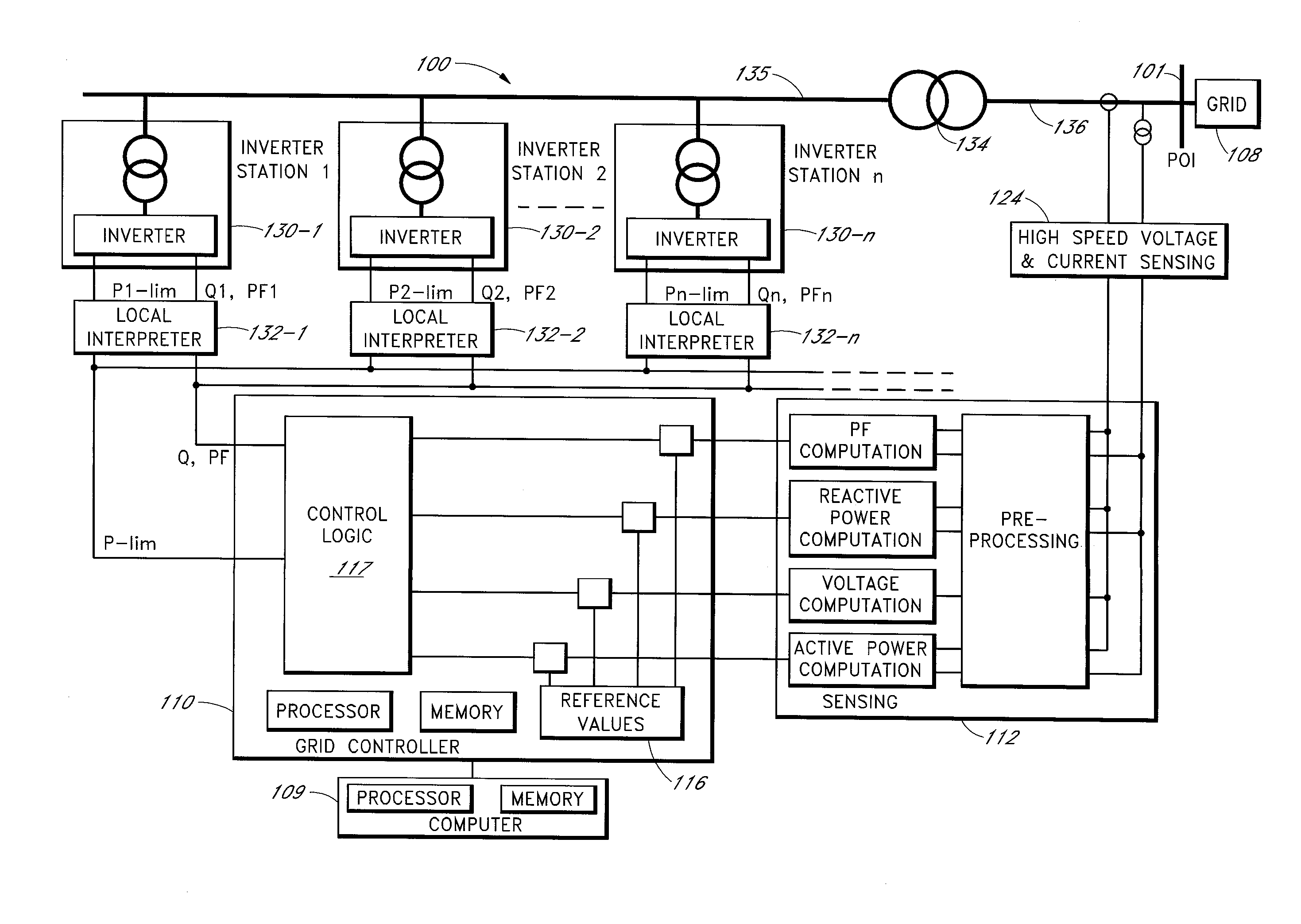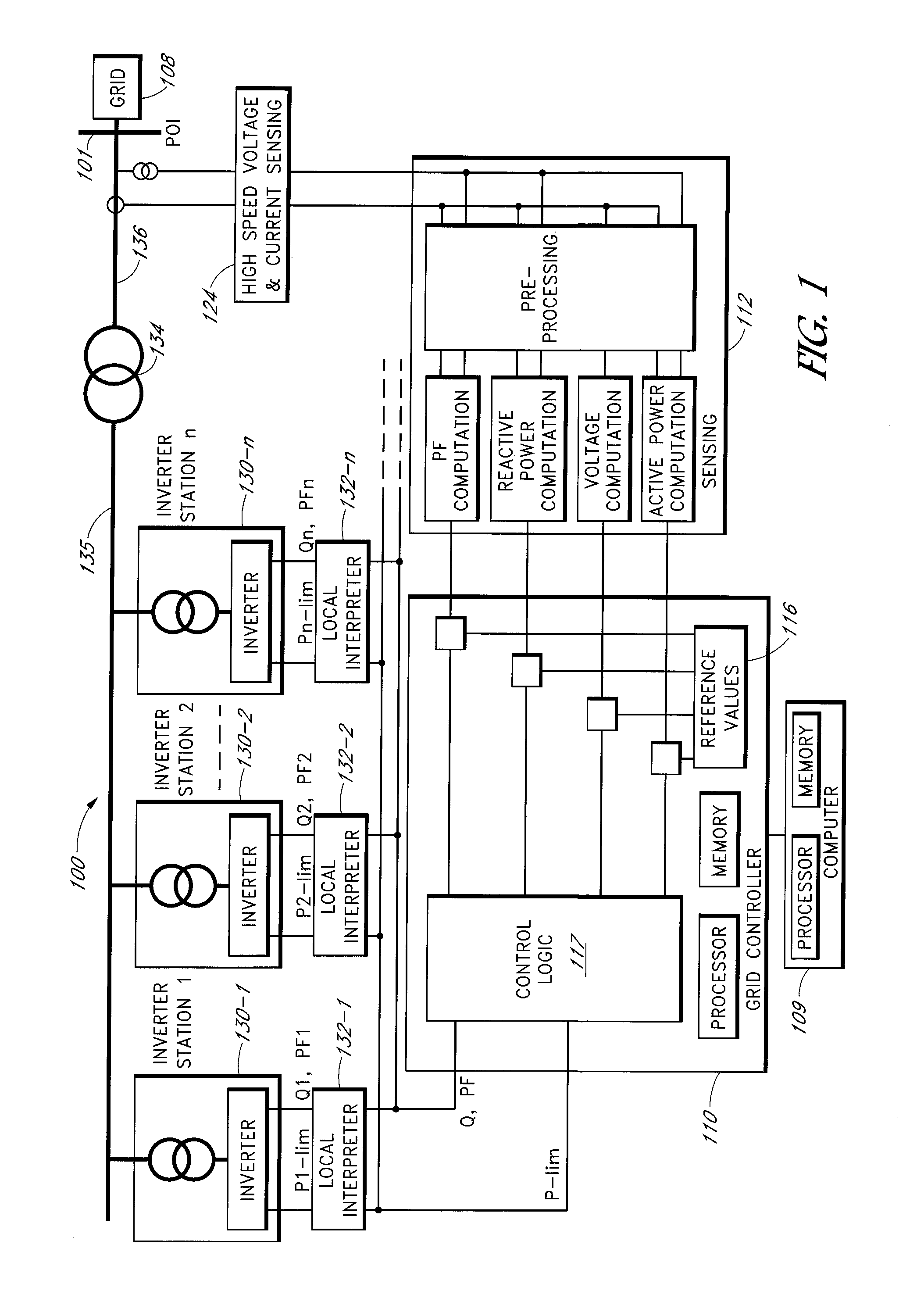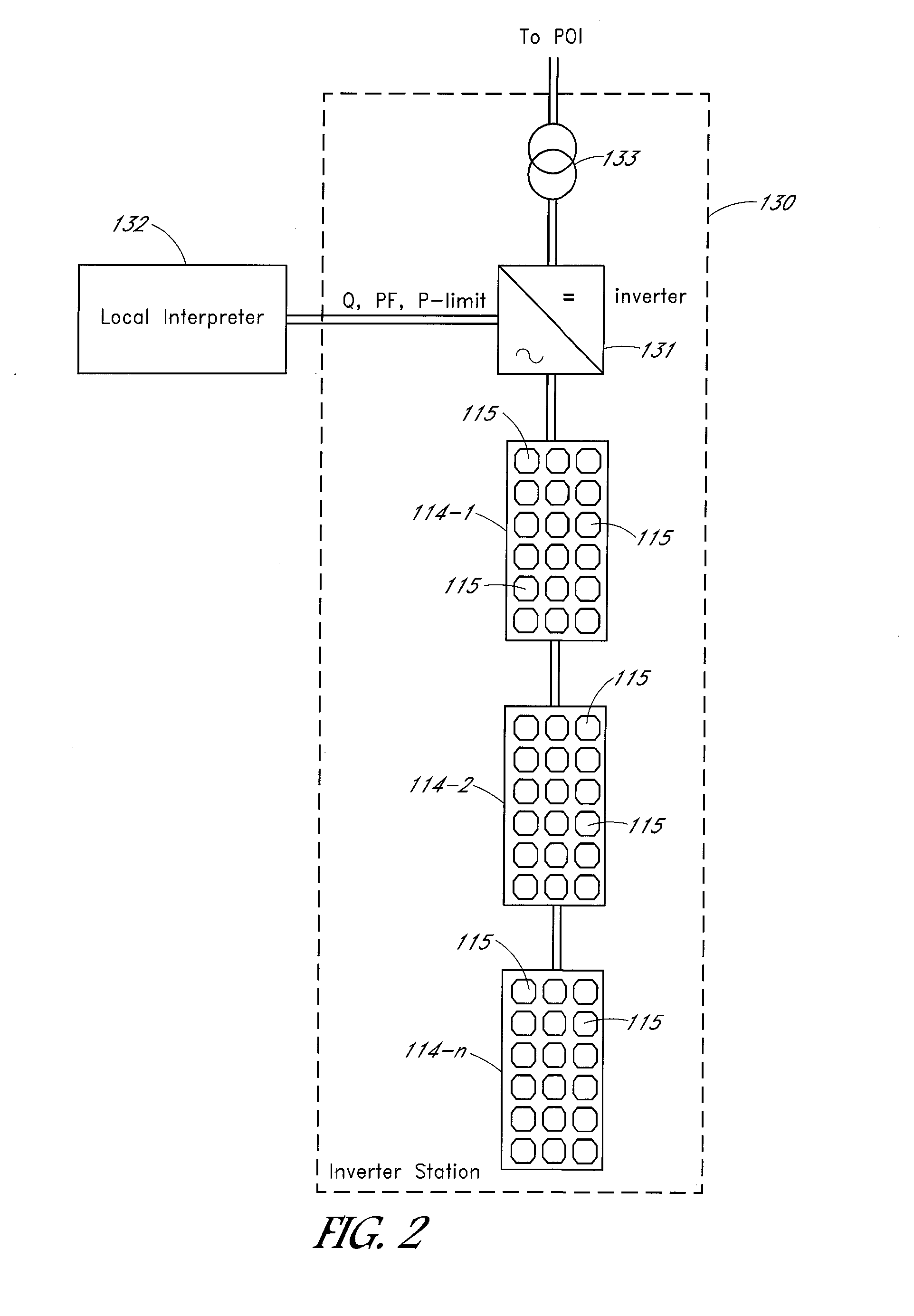Control techniques for photovoltaic power plants
a photovoltaic power plant and control technology, applied in the field of solar cells, can solve the problems of inability to respond to conditions, additional constraints on communication infrastructure and control response rates, and the practical challenges of coordinated control of multiple inverters operating in parallel in a large photovoltaic power plant that have not been fully explored or understood
- Summary
- Abstract
- Description
- Claims
- Application Information
AI Technical Summary
Benefits of technology
Problems solved by technology
Method used
Image
Examples
Embodiment Construction
[0020]In the present disclosure, numerous specific details are provided, such as examples of apparatus, components, and methods, to provide a thorough understanding of embodiments of the invention. Persons of ordinary skill in the art will recognize, however, that the invention can be practiced without one or more of the specific details. In other instances, well-known details are not shown or described to avoid obscuring aspects of the invention.
[0021]In general, the generic optimal reactive power scheduling problem for a large photovoltaic power plant can be described as follows. For an appropriately chosen midpoint node where all clusters of inverters are connected, given a set of midpoint nodal variables vm(k) and qm(k), and inverter variables: pi(k), i=1,2, . . . , N, compute Qi(k), i=1,2, . . . , N, which minimizes a selected objective function J(k), under the constraint that
|qi(k)|≦qimax(k) (EQ. 1)
[0022]where qimax(k), the reactive power limit of inverter i, is dependent la...
PUM
 Login to View More
Login to View More Abstract
Description
Claims
Application Information
 Login to View More
Login to View More - R&D
- Intellectual Property
- Life Sciences
- Materials
- Tech Scout
- Unparalleled Data Quality
- Higher Quality Content
- 60% Fewer Hallucinations
Browse by: Latest US Patents, China's latest patents, Technical Efficacy Thesaurus, Application Domain, Technology Topic, Popular Technical Reports.
© 2025 PatSnap. All rights reserved.Legal|Privacy policy|Modern Slavery Act Transparency Statement|Sitemap|About US| Contact US: help@patsnap.com



